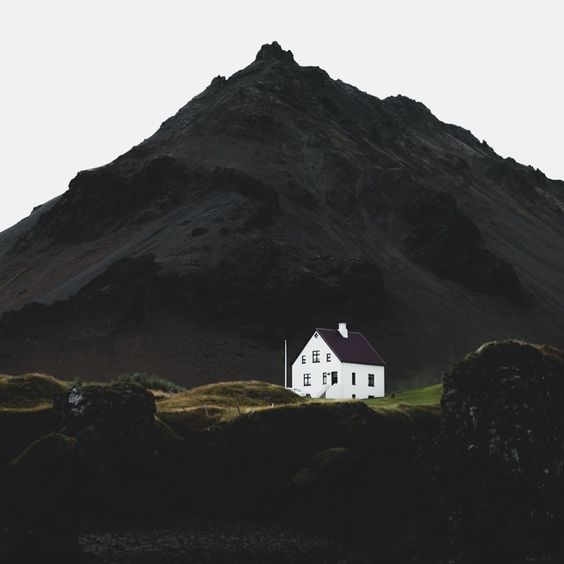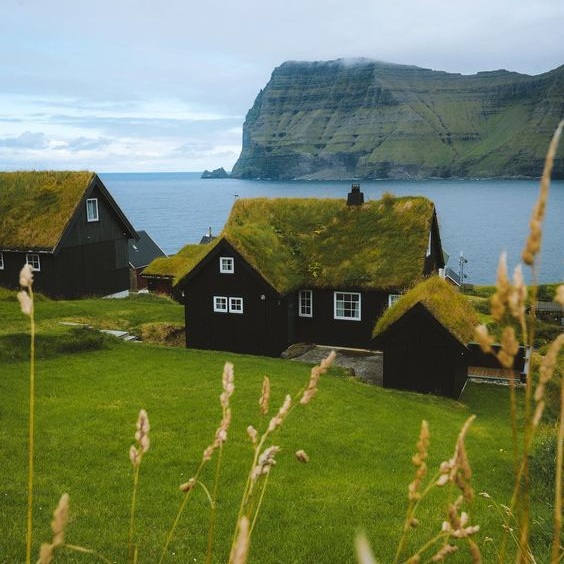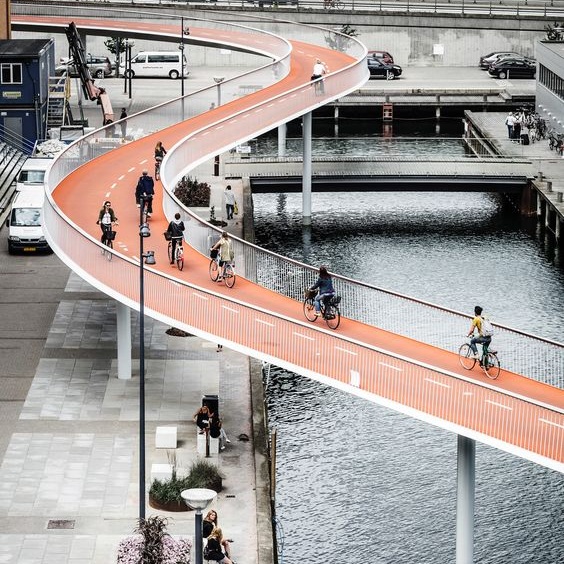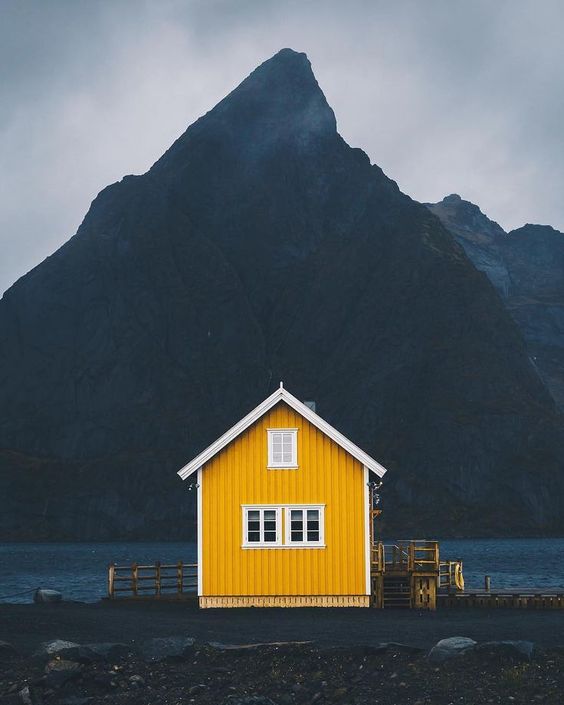Sustainability: Everything you need to know for a greener planet
With each day that goes by, we understand more about the effect humanity has had on our planet.
Over the past hundred years, human life has changed dramatically. In turn, so has the environment. It's impossible to argue that our new lifestyles are not to blame for this change.
Thankfully, because we caused a lot of the damage, it’s possible to reverse some of it. That’s where sustainability comes in.
But, what exactly is sustainability?
Sustainability helps us to think about the long-term effects of our actions. It helps us make smarter choices which are healthier for the environment.
To properly understand sustainability, let’s take it back to the beginning. This article starts by looking at the unhealthy practices we’ve cemented into history. It then goes right up to advice on how we can be more sustainable today.
To a greener future!
Illustration by Brittany Skara
Why we need to be more sustainable
By now, we’ve worked out that being sustainable is necessary for everyone. But, it’s not always been this way. The rise of consumer culture and advances in technology led us to where we are now. For years, people consumed resources without knowing the effect it had on the environment. Thankfully, now we do know!
But, knowing isn’t everything. We need to do something about it and save our planet! If we don’t reverse some of our habits, we could reach a global tipping point. And yes, it is as scary as it sounds. It would mean we’d reach a point of no return where environmental damage would multiply out of control. But, more of that later!
Let’s start by looking at the history of humans interacting with the environment.
The history of sustainability - how did we get here?
Hunter-gatherer societies: 80,000-90,000 years ago
From as far back as hunter-gatherer societies, humans have left a trail of destruction in the natural world. Back then, groups moved from settlement to settlement, finding new fertile ground. This technique is still used today in some parts of the world. Right now, agriculture causes 80% of tropical deforestation. However, as the global population was only a fraction of what it is now, the hunter-gatherer impact was tiny in comparison.
Renaissance and Enlightenment philosophers: 700-230 years ago
Fast forward to the fourteenth century! For the first time, people started to consider the effects humans had on the environment. Theories about sustainable living were written about, but mostly ignored. It didn’t feel pressing enough!
Industrial Revolution: 250 years ago
It wasn’t until the twentieth century that we understood the damage we were doing to our environment. We now know that greenhouse gases started warming up our oceans in the 1830s. Coincidentally, the Industrial Revolution in Europe and the USA was in full force at this time.
The Industrial Revolution was one of the most important landmarks in history. From this point, we started burning fossil fuels at an alarming rate. Advances in transportation and manufacturing led to an increased population. The average person could finally make a living for themselves. With a bit of extra money, healthcare generally improved too. Suddenly, there were so many more people to burn through resources. And, mechanisation meant everyone could afford more. People had possessions and, in turn, created much more waste.
The invention of plastic: 100 years ago
The invention of plastic in 1907 brought another host of problems. It seemed like a wonder-material at the time - cheap, easy to mould, water-proof, and hard-wearing. Though these qualities were great when the products were in use, what about when they were discarded? Unlike the natural materials used for centuries before, plastic would take years to decompose. The damage plastic has caused to our environment was inconceivable when it was first made.
By the 1980s, we finally understood the effect greenhouse gases had on our environment. By this point, our whole lives were built around mass-consumption and the use of fossil fuels.
Our habits have to change!
Illustration by Amy Casey
Illustration by Josephine Rais
Illustration by Andrea Ucini
The environment today
So, where does that land us?
Well, climate change is a real part of our lives. Extreme weather is already on the rise. It comes in the form of unusual heat waves and freak snow storms. These are only set to increase if our lifestyles stay the same.
The ocean is also taking a hit from mass-consumerism. 6.5 million tons of litter end up in the ocean every year. Out of that, 50% is plastic which will drift for centuries before it degrades. 19% of the world’s coral reefs have already been lost. Biodiversity is being destroyed.
Air pollution is another growing threat. Some of the world’s cities are becoming dangerous to live in. In fact, air pollution leads to 7 million premature deaths every year.
The list goes on! The world is not in a good way.
Environmental tipping points in the future
Predictions for the future are looking bleak. If nothing changes, this is what the year 2050 could look like;
15-37% of species will be ‘committed to extinction’.
The amount of plastic in the ocean will be equal in weight to the fish in it.
There will be 250 million climate refugees, people forced from their homes because of changes to our environment.
These may just be predictions, but they’re worth taking note of. Especially considering that 45% of all potential environmental collapses are interrelated. This means that if large-scale change does occur, it could start a domino effect. Each change could amplify the next.
To reverse the damage we’ve done on the environment, we must act now.
The Definitive Guide to Sustainable Living
Some good news? It’s easy to incorporate sustainability into our lifestyles. Our main aim should be to cut consumption in general. 50% of all pollution results from industrial and manufacturing activities. So, if we stop buying so much and using so many resources, the environment will get a well-earned rest.
It’s time to get rid of our irresponsible, throw-away culture and get our world back. Here are some small changes you can make to be more sustainable.
Change your transport
Road transport is one of the major contributors to air pollution. A way around this? Stop using your car! For zero emissions, try walking or cycling. In Copenhagen, 49% of commutes are done by bike. As a result, it has the second best air quality out of the major European cities. Not only is that better for the environment, but it’s healthier for our lungs as well! As it counts as exercise, cycling also has brilliant mental health benefits.
If that’s not an option for you, public transport is the next best thing. Luxembourg is set to be the first country to make all public transport free. From 2020, their buses, trams, and rail networks will be free to use. Yes, Luxembourg is one of the world’s smallest countries. Making a policy like this is easier for them to pull off. But hopefully, other larger nations will take note!
Reducing our reliance on cars is easy when we get in a sustainable frame of mind. And, it comes with so many other benefits, apart from saving the planet!
Use as little plastic as possible
Overuse of plastic is one of the biggest problems facing the environment. Plastic bottles take 450 years to decompose. So, if you throw away a plastic bottle today, it will be still around in the year 2400! This is difficult to even fathom!
Only 7% of plastic ever made has been recycled. A whopping 79% of it has been thrown away so is now either in landfill, littering the ground, or floating around the ocean. To add, some plastics can’t be recycled at all! It’s best to avoid plastic wherever you can.
So, what can you do?
Seek out plastic alternatives when possible. For example, remember to take reusable, canvas bags with you to the supermarket.
Say no to single-use plastic. The European Union plans to ban single-use plastic by 2021. Canada quickly followed pledging they too would place a ban by this time. This will mean that items such as plastic straws and q-tips will be taken out of circulation. Why not start early?
Buy quality, reusable items to use whilst you’re out of the house. Look into knives and forks made from bamboo or water bottles you can keep for life. This way, you can still be sustainable even if you’re on the go.
Opt to buy fruit and veg which hasn’t been packaged unnecessarily. Local farmer’s markets normally sell fruits and vegetables loose. And, you know local food produce doesn’t have the air miles supermarket food does either.
Eat less meat
Meat is a contentious issue. Many people see it as a staple within their diets. However, the way the farming industry is set up at the moment is not healthy.
The world’s cattle alone consume enough food to equal the caloric needs of 8.7 billion people. To add to that, the livestock industry creates as much greenhouse gas emissions as all the world’s cars, trucks, and aeroplanes combined. These statistics are staggering. They’re made worse by the fact that a considerable amount of meat produced goes to waste anyway. Each year globally, 12 billion animals are killed for meat that’s never eaten.
So, what are we meant to do about it?
It’s obvious by now that we should be eating less meat. But, that doesn’t have to mean no meat at all. Since 2003, a wave of people have practised meatless Mondays. And, it’s as simple as it sounds. By following this diet, people may be cutting their meat intake by a seventh. Any change is good!
Or, if you still need meat every day of the week, cut the most damaging kinds. Lamb and beef are the least sustainable kinds of meat because of their methane outputs. Could you do with one less burger a week?
The benefits of sustainable living
As well as saving the planet, there are many other benefits of living sustainably. Let’s have a look at some of them!
It saves you money
For years, sustainable living has had a bad reputation. It seemed elitist and expensive, something not everyone could access. Nowadays, it doesn’t have to be this way!
One of the main teachings of sustainability is to cut consumption. So, it’s only natural that people end up buying less. Add that to the fact that higher cost reusable items are offset in the future. If people can make more expensive, one-time purchases, overall costs are less.
Health benefits
Whilst keeping the planet healthy, sustainable choices are often better for our bodies. To start, walking instead of driving has huge health benefits. It’s good for our heart, lungs, and helps strengthen our muscles. Our mental wellbeing reaps the benefits too. It gives us time to self-reflect, reduces stress, and has been linked to reducing the risk of various mental health conditions.
A lot of research has been done into the health benefits of vegetarianism. Meat-heavy diets have been linked to obesity and cancer. High amounts of red meat is especially damaging. By coincidence, beef is also the most damaging meat to the environment.
Better quality of life
By adopting a sustainable lifestyle, many people feel invigorated with a renewed sense of purpose. It gives people a better appreciation for the things they have. In a lot of cases, this leads to a renewed appreciation for life.
Sustainability is a big part of adopting a minimalist lifestyle. Like we said in our minimalism definitive guide, living simply makes many people happier. It helps them become more self-aware, thinking of the effect they're having on their surroundings. It gives people a feeling of agency, that they can make smart choices which will change their lives.
Sustainable Lifestyles in Scandinavia
Here in Scandinavia, sustainable living has become a big part of everyday life. Throughout the Nordic countries, various schemes are at work which benefit our planet. Here's a run-down of the practices Sweden, Norway, and Denmark have adopted.
Sweden - the most sustainable country in the world
For years, Sweden has maintained its position as the most sustainable country in the world. And, there are lots of reasons why they’ve held onto the top spot!
Back in the 1990s, Sweden switched to using mostly district heating systems. By linking the heating systems in a given area, much less energy goes to waste. Sweden was also one of the first countries to introduce a carbon tax which made fossil fuels more expensive. As a result, they use the highest percentage of renewable energy in the EU.
Sweden also has its recycling schemes sorted perfectly. Their ‘pant’ system means that people receive a deposit back on items they recycle. Now, 84.9% of its aluminium cans and PET bottles get recycled through this system. Less than 1% of their rubbish goes into landfill! In fact, they produce so little waste that they import it from other European countries.
In recent news, the Sweedish Fashion Council decided to cancel Stockholm's 2019 summer fashion week. The reason? Over sustainability concerns. It’s obvious that sustainable living is a real priority for Sweden. Their dedication is commendable.

Norway - 99% of all power generation is through hydropower
Norway is another country geared towards renewable energy consumption. Its landscapes are perfect for generating hydroelectric power; steep valleys, waterfalls, and rivers. Accordingly, the infrastructure is in place to take full advantage of it! 99% of Norway’s power generation is through hydropower. Though, this sort of energy production isn’t new to them. The state purchased its first waterfall back in 1895 to supply energy to the Setesdalsbanen railway line. They’ve been at it for a while!
The Norwegian government is also set on protecting the natural beauty of the country. Recently, the Norwegian Maritime Authority proposed a ban on certain shipping activities in the country’s fjords. Large cruise ships and scrubbers have polluted some of their waters. Therefore, legislation is on its way to conserve the Norwegian landscape for future generations.
Finally, Norway holds a unique, sustainability resource which the whole world could benefit from. The Svalbard Seed Vault was first conceived of back in the 1980s but opened officially in 2008. It contains a collection of the world’s seeds. Now, that's amounted to over a million varieties. In any state of global emergency, the vault contains natural resources to reseed the world with. It truly does sustain natural life for the future.
Denmark - Copenhagen aims to be the first carbon-neutral capital
As we mentioned previously, 49% of commutes are done by bike in Copenhagen. The city is kitted out to be a cyclist’s dream! In fact, Copenhagen built at least one mile of new cycleway every year from 1912 to 1969. And, there are more bikes than people in the city.
Thanks in part to its cycling culture, Copenhagen aims to become the world's first carbon-neutral capital by 2025. There’s reason to think they’ll fulfil this target! Over 70% of all the city’s hotel rooms hold an official eco-certification. And, organic food makes up 24% of the total food sale in the city. Copenhagen is well on its way to being carbon-neutral!
Further afield in the rest of Denmark, you witness the same dedication to sustainable living. The denmark.dk website claims it’s because Danes have traditionally felt tied to the land and seas. So, they continue to respect nature by being sustainable. This mentality is beautiful.



Sustainability at Project Nord
At Project Nord, we care deeply about sustainability. Ever since the company began, we adopted practices which would limit our impact on the environment.
Firstly, Project Nord teamed up with Tree Nation to reforest the world. Every time you buy one of our products, a tree is planted on your behalf. For more information on exactly how this happens, take a look at our dedicated sustainable responsibility page. And, access Tree Nation’s website by clicking here.
We also use FSC certified paper. This means we know the wood used was sustainably-sourced. Our printing methods reach the highest environmental standards of the poster industry. The water-based, solvent-free, odourless ink requires no ventilation. And, as we print on demand, we never waste stock.
You can trust Project Nord to make as little impact on the environment as possible. Sustainability is a key element of our ethos.
We hope you’ve enjoyed our guide to sustainability.
Yes, the world is a scary place at the moment. But luckily, there are things we can do to change that! Even on a personal level, small adjustments to our lives can help us feel empowered enough to make a difference to the planet.
So, let’s get started. Let’s start taking sustainability seriously today!
Written by Jessica Slater.
Images sourced from Pinterest and Project Nord website.

















